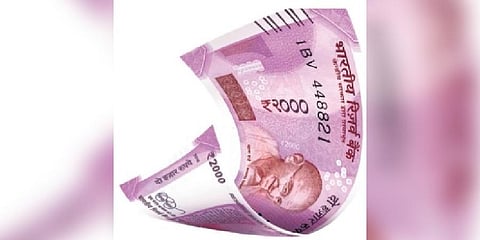

MUMBAI: The Reserve Bank of India (RBI) on Friday announced the withdrawal of Rs 2,000 denomination banknotes from circulation. However, the central bank clarified that the high-value notes will continue to be legal tender. In other words, the public can continue to use these notes for transactions.
The surprise announcement came as a shocker to many, reviving memories of the hardships the public had to face when the Centre announced demonetisation in November 2016 and decided to scrap Rs 500 and Rs 1,000 currency notes overnight. This time, however, the authorities are confident there won’t be any chaos as the Rs 2,000 banknote will continue to remain in use.
The central bank has asked people to exchange the high-value notes into other denominations or deposit them with banks until September 30 at any bank branch. Banks will start exchanging these notes from May 23. “Members of the public can continue to use Rs 2,000 banknotes for their transactions and also receive them in payment. However, they are encouraged to deposit and/or exchange these banknotes on or before 30 September 2023,” RBI said in a note.
RBI started printing Rs 2,000 notes in November 2016 after the Rs 1,000 and Rs 500 notes were scrapped overnight. Explaining the rationale behind the decision, the central bank said the objective of introducing Rs 2,000 banknotes was met once banknotes in other denominations became available in adequate quantities. Therefore, the printing of Rs 2,000 banknotes was stopped in 2018-19. It has also been observed that this denomination is not commonly used for transactions.
“About 89% of the Rs 2,000 denomination notes were issued prior to March 2017 and are at the end of their estimated life-span of 4-5 years,” said RBI. “Total value of these banknotes in circulation has declined from Rs 6.73 lakh crore at its peak as on March 31, 2018 (37.3% of notes in circulation) to Rs 3.62 lakh crore constituting only 10.8% of notes in circulation on March 31, 2023,” it added.
People can deposit Rs 2,000 banknotes into their bank accounts or exchange them for banknotes of other denominations at any bank branch. In order to ensure smooth operations and to avoid disruption of regular activities of bank branches, the exchange of Rs 2,000 banknotes into banknotes of other denominations can be made up to a limit of Rs 20,000.
A person can approach any bank branch to exchange notes irrespective of the fact whether he or she has an account in that bank or not and can exchange Rs 2,000 notes up to a limit of Rs 20,000 at a time.
Figuring it out
Notes to continue to maintain legal status
All banks shall discontinue the issue of Rs 2,000 denomination banknotes with immediate effect. ATMs may also be reconfigured accordingly. However, these notes will continue to be legal tender and can be used for transactions, payments etc even after September 30. Banks will also continue to accept Rs 2,000 notes in deposits after September 30
Special arrangements for senior citizens
In order to avoid the kind of chaos witnessed after the 2016 demonetisation, RBI has instructed banks to make arrangements to reduce inconvenience to senior citizens, persons with disabilities etc, seeking exchange or deposit of Rs 2,000 banknotes
Will RBI extend the Sept 30 deadline?
Experts believe RBI is now trying to put pressure on the public to expend high-value banknotes; it is likely to extend the date